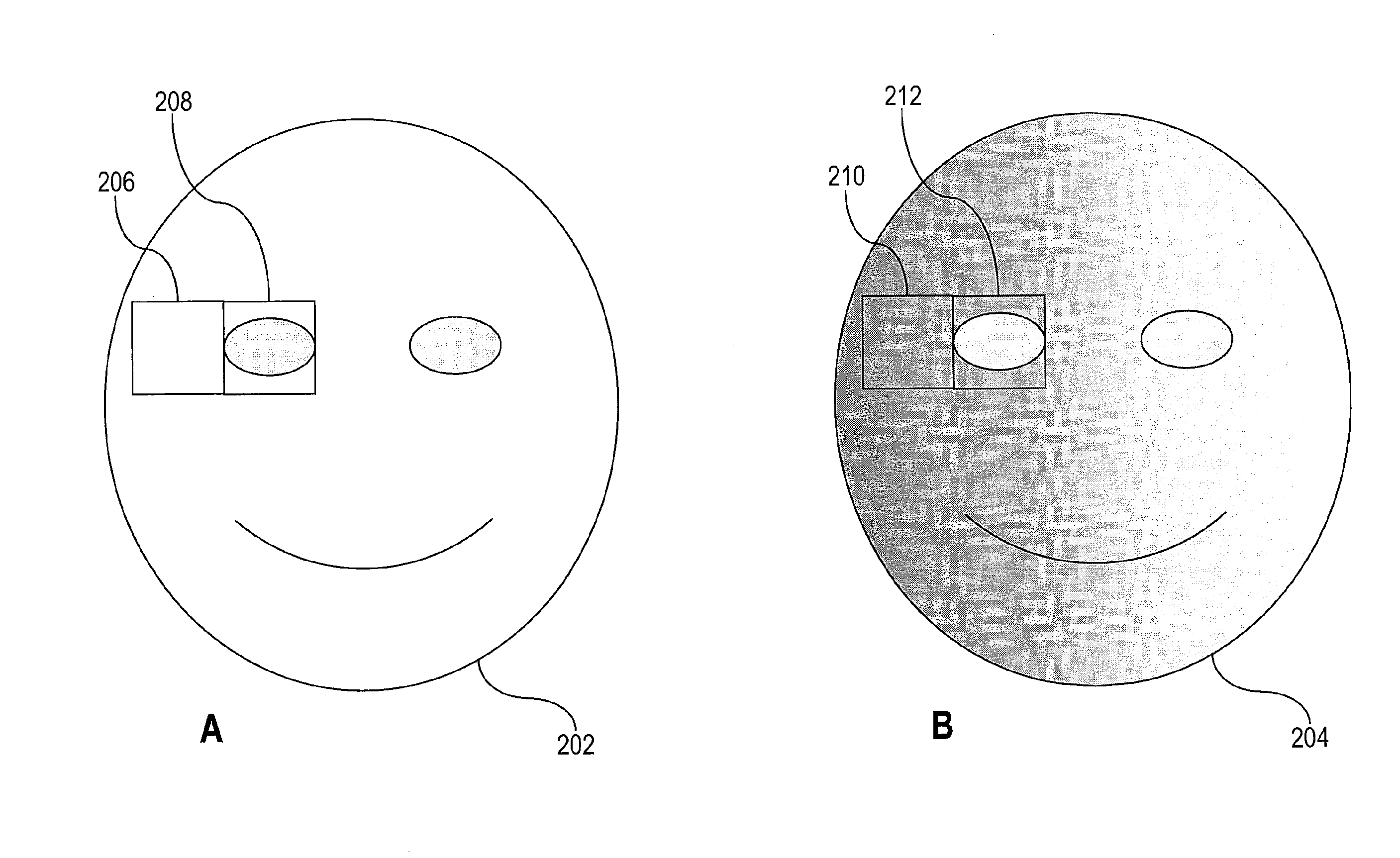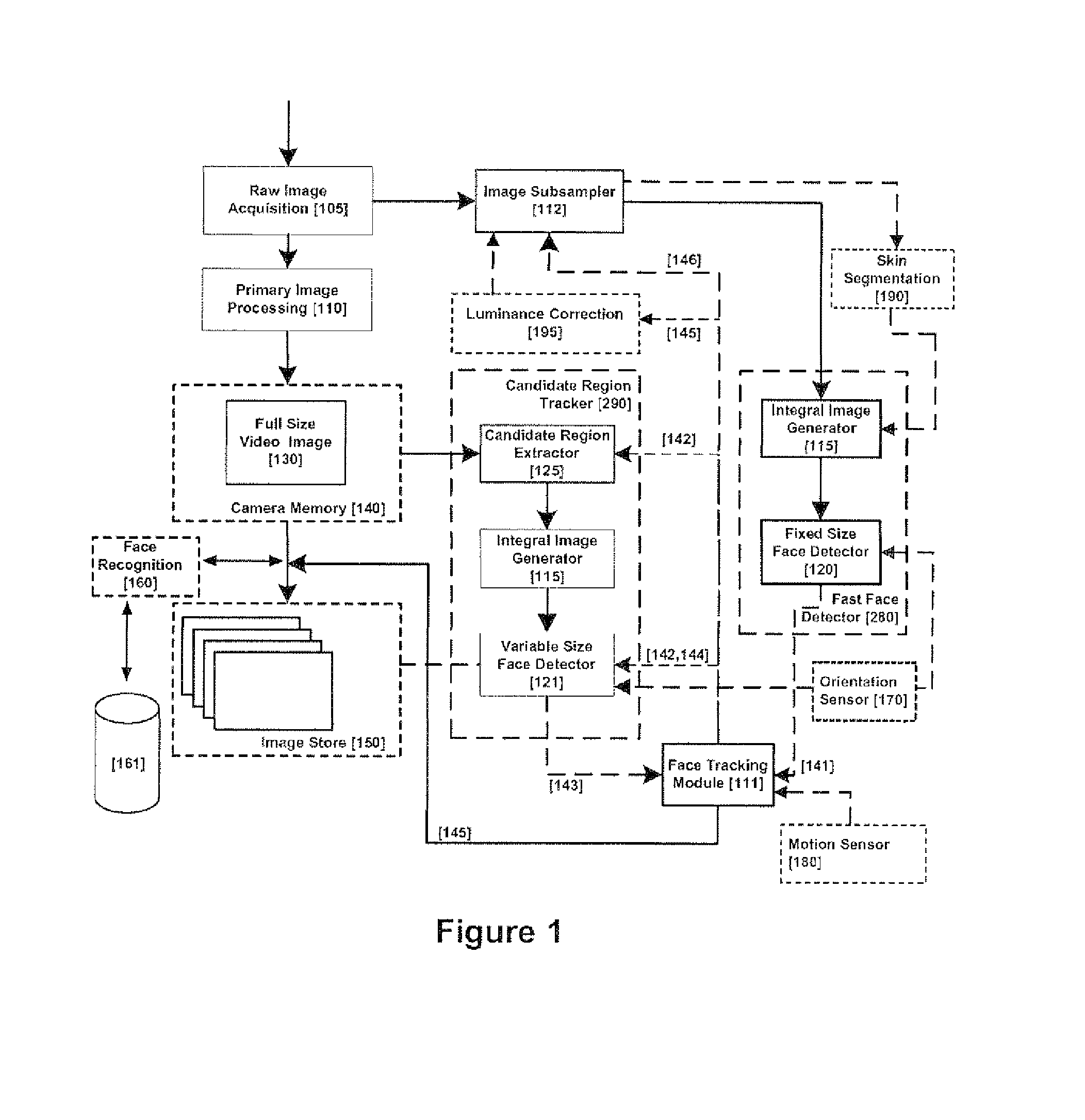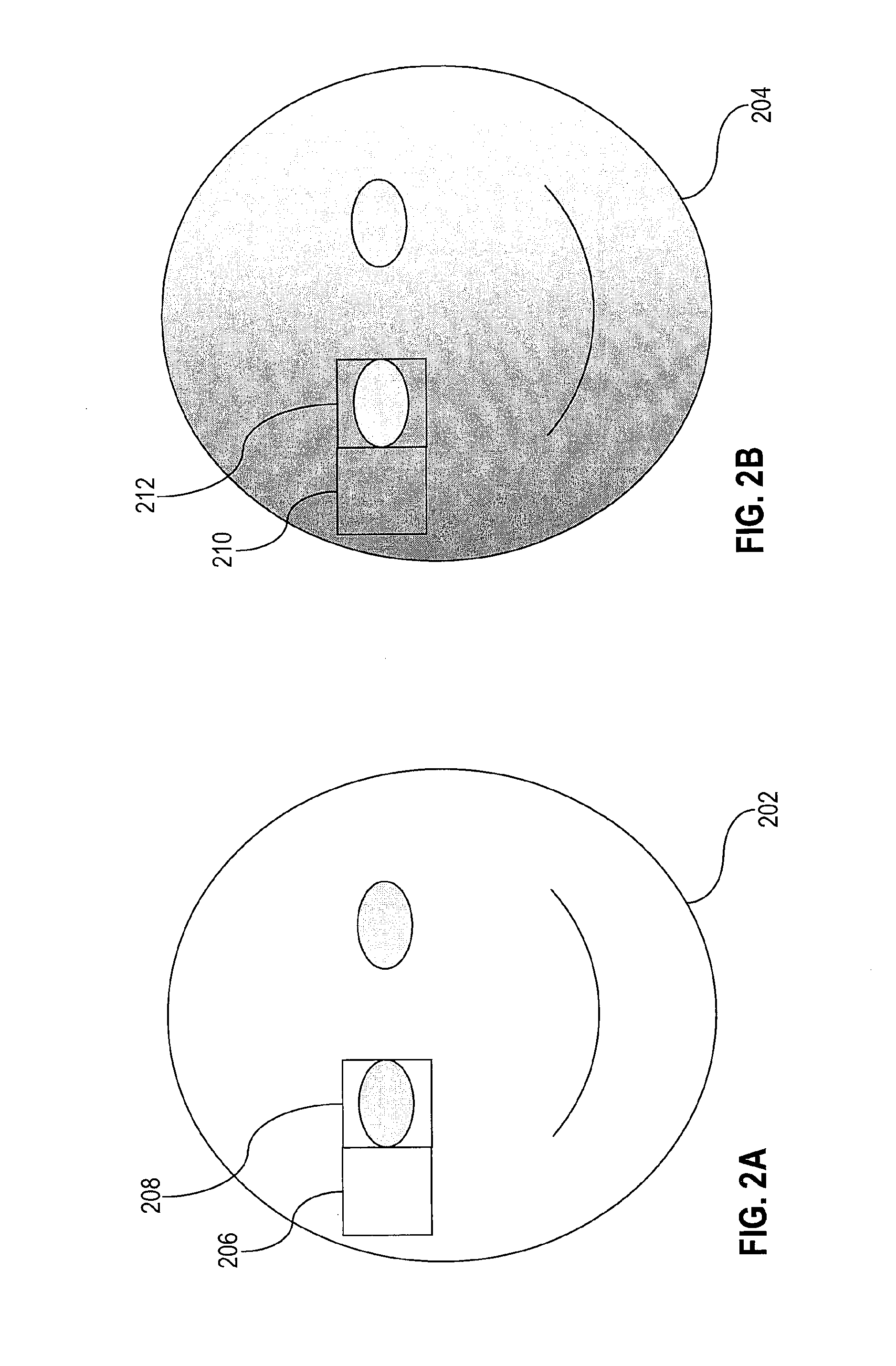Face detection using division-generated haar-like features for illumination invariance
a technology of illumination invariance and division-generated features, applied in the field of digital image processing, can solve the problems of inconvenient inability to accurately compute the sum of all pixel values within the source image's entire facial region, and inability to meet the needs of real-time face detection applications
- Summary
- Abstract
- Description
- Claims
- Application Information
AI Technical Summary
Benefits of technology
Problems solved by technology
Method used
Image
Examples
Embodiment Construction
[0020]In the following description, for the purposes of explanation, numerous specific details are set forth in order to provide a thorough understanding of the present invention. It will be apparent, however, that the present invention may be practiced without these specific details. In other instances, well-known structures and devices are shown in block diagram form in order to avoid unnecessarily obscuring the present invention.
Overview
[0021]According to one embodiment of the invention, instead of calculating a Haar-like feature value by subtracting the average pixel intensity value in one rectangular region from the average pixel intensity value in another, adjacent rectangular region, a face-detection system calculates that Haar-like feature value by dividing the average pixel intensity value in one such rectangular region by the average pixel intensity value in the other such adjacent rectangular region. Thus, in one embodiment of the invention, each Haar-like value is calcul...
PUM
 Login to View More
Login to View More Abstract
Description
Claims
Application Information
 Login to View More
Login to View More - R&D
- Intellectual Property
- Life Sciences
- Materials
- Tech Scout
- Unparalleled Data Quality
- Higher Quality Content
- 60% Fewer Hallucinations
Browse by: Latest US Patents, China's latest patents, Technical Efficacy Thesaurus, Application Domain, Technology Topic, Popular Technical Reports.
© 2025 PatSnap. All rights reserved.Legal|Privacy policy|Modern Slavery Act Transparency Statement|Sitemap|About US| Contact US: help@patsnap.com



